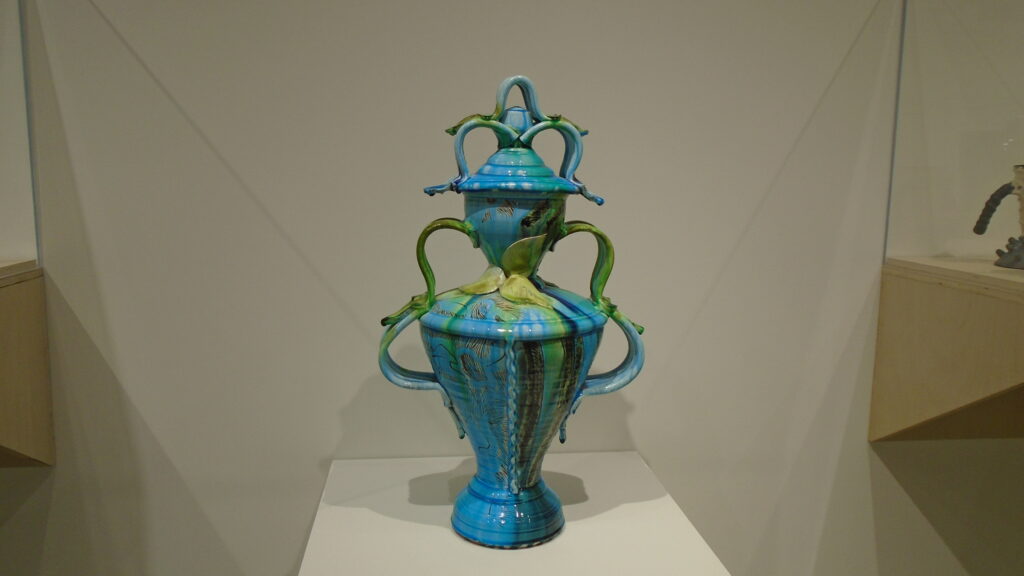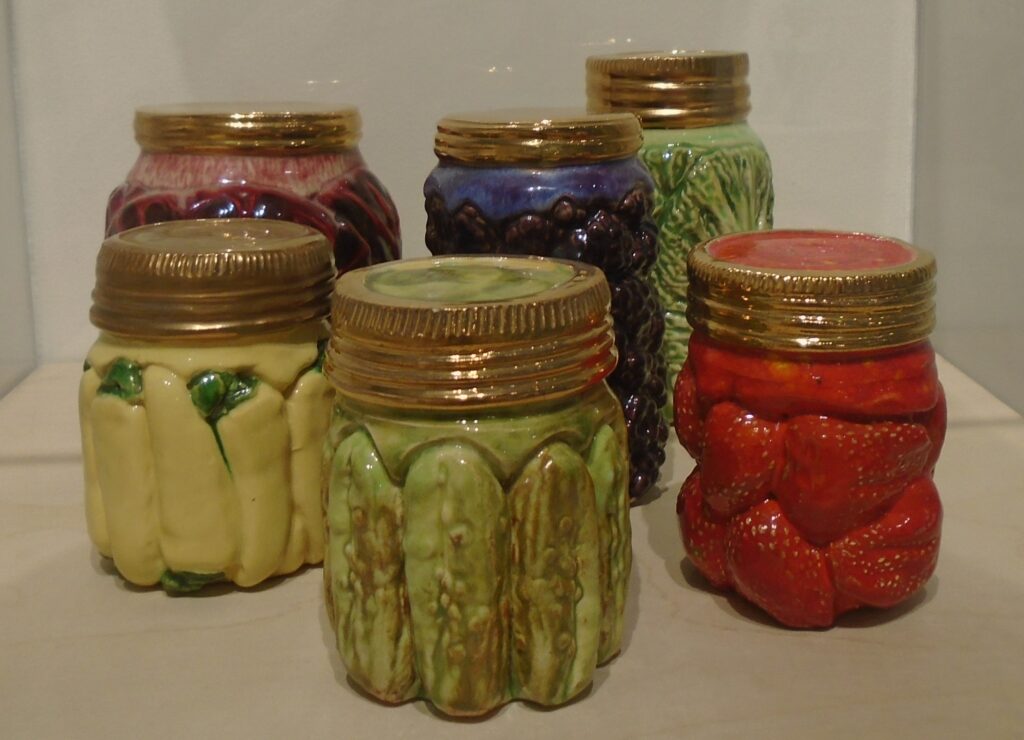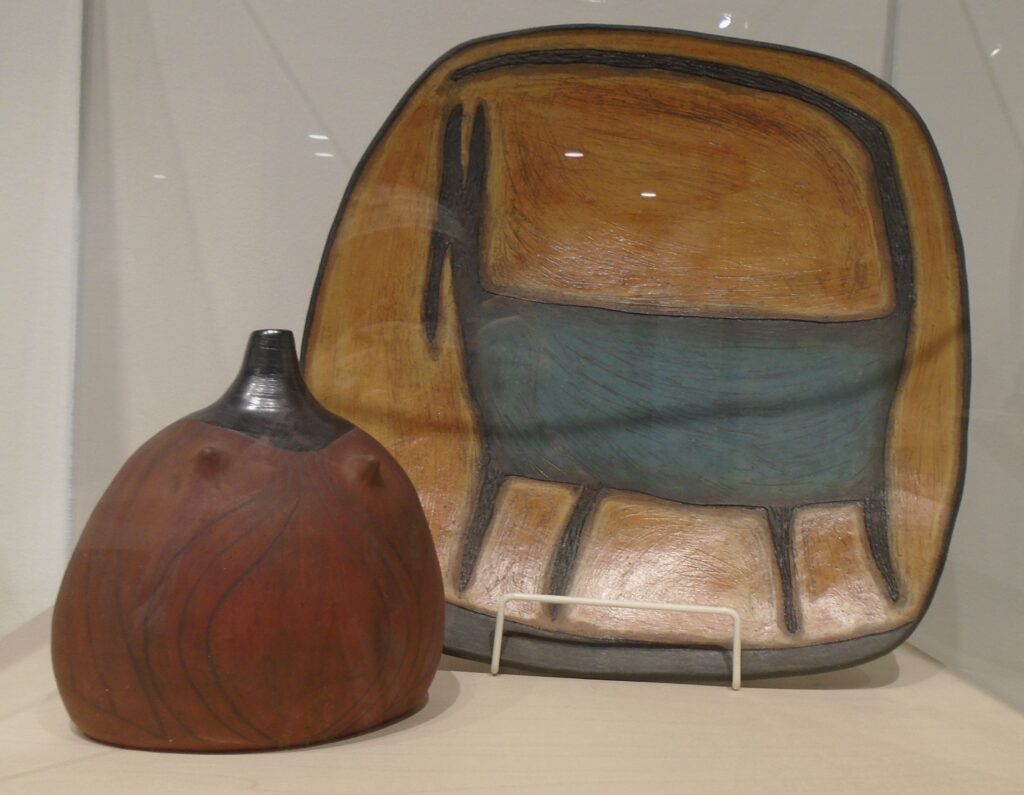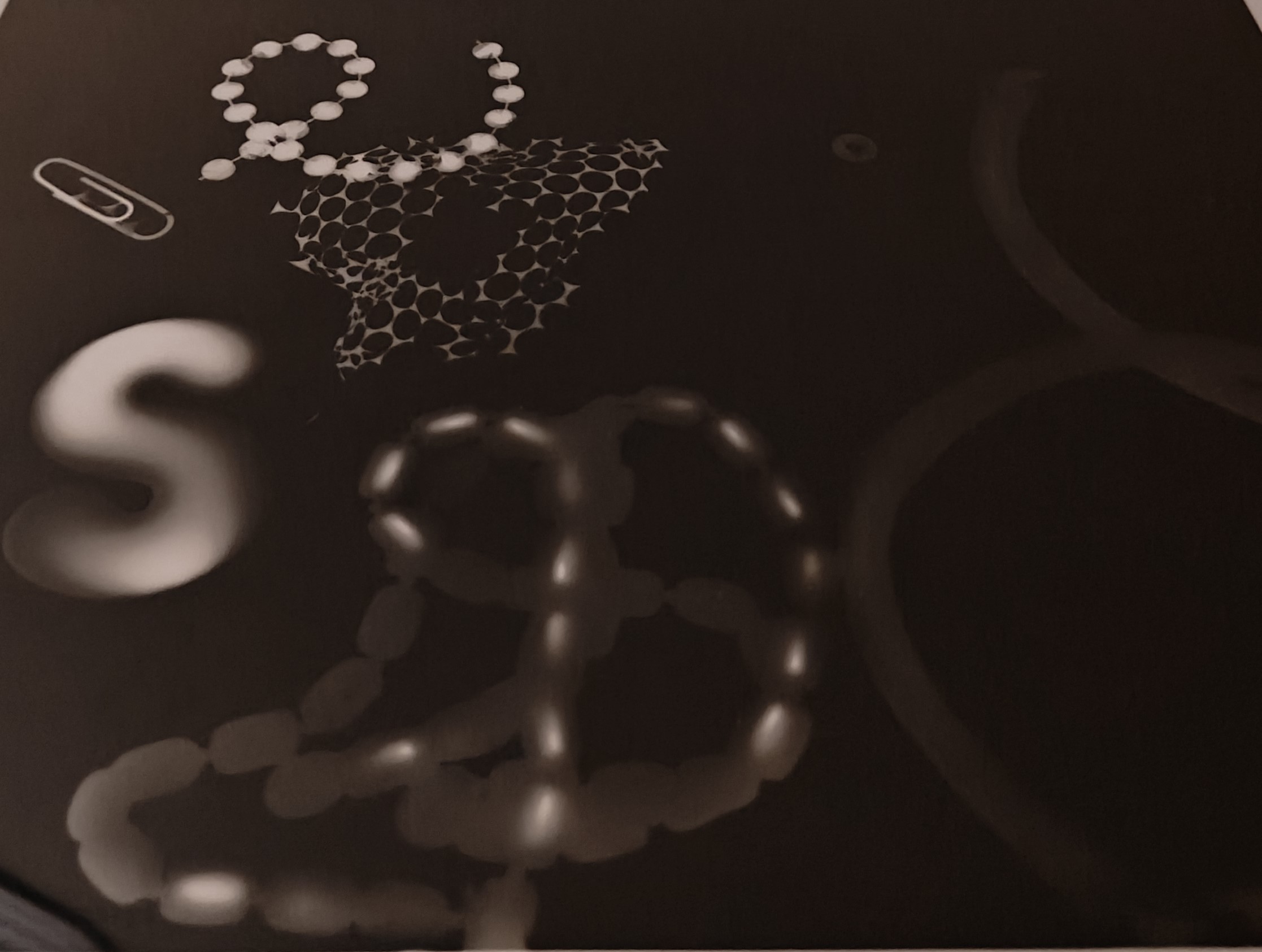This year marks the 40th anniversary of the Art Gallery of Burlington (AGB), nicely coinciding with the 150th anniversary of the City of Burlington, and to celebrate the big 4-0, the AGB is reaching into their vaults, to where it all started.
The result is a two-stage exhibition called the Weight of Clay, taking out select pieces from the original donation of over 300 pieces by Herb O. Bunt that marked the beginning of the AGB’s specialized collection of contemporary Canadian ceramic artworks. This first stage of the Weight of Clay, called From Collector to Collection, is a bit of a teaser for the second stage, and is open now and runs until May 28, 2023. It features a selection of pieces from artists including David Taylor, Paul Mathieu, Mimi Cabri, Jim Hong Louie, Agnes Olive, and Joe Fafard, with well-loved favourites on display like Hong Louie’s Dodo #1 and Fafard’s Bull. And make sure you look into Louise Card’s Sardine Can — those little sardines are not to be missed.

Bunt was an avid collector of ceramics and paintings, and is remembered by all who knew him as a kind soul. Forty years ago, when Bunt was looking to donate his collections public galleries, the AGB existed, but did not have a focused collection. While the Agnes Etherington Art Centre in Kingston accepted Bunt’s collection of paintings, the AGB accepted his ceramic collection, simultaneously providing a boost to the gallery’s vaults and a focus for the future.
It was a smart decision for the AGB. As Senior Curator Suzanne Carte notes, they were a small organization with a fairly small vault, and wanted to differentiate themselves from other nearby public art galleries in Hamilton and Oakville. The other local galleries were not medium-specific, so the new focus on ceramics was an immediate boon. And ceramics come in many sizes, from large-scale to small, allowing the AGB to make the most of their vault space.
And so it began. And grew. Bunt had collected artists’ works over the course of their careers, forming relationships with them, and giving the option of taking a retrospective lens to their artistic evolution. Jonathan Smith, curator of the AGB for 38 years and now curator emeritus, continued in that vein, building relationships with artists as pieces were added to the collection.
The collection has been built with an eye to representation as well as continued relationships with artists. There is “coast to coast to coast” representation, says Carte, and from “intentionally diverse artists.” Lately, the AGB added a seminal work by Brendan Lee Satish Tang, known for his technically beautiful vessels (often in the Ming Dynasty style) juxtaposed with more modern or technological elements, as well as five new mugs from a variety of artists. The AGB has “a hefty mug collection,” notes Carte, as “it’s an affordable way to start a relationship with an artist…and almost every potter, even those who do large sculptural pieces, has at some point thrown a mug.” This recent mug purchase was set up with the artists with the intention of allowing them to be functional as well as objets d’art.
And so the collector set the foundation for the collection, which is now the largest collection of contemporary Canadian ceramics in the world. The next stage of the Weight of Clay, called Collecting Contemporary Ceramics, will open on June 16 and run until Oct. 8, 2023, and will showcase 40 works reflecting on the 40 years of the collection. There will also be archival material, photos, and posters, with subsections of the collection on display, from functional ware to representational pieces.
While the collection has maintained Bunt’s ethos of supporting artists throughout their career, it has also evolved with the times. What is interesting, Carte says, is the explosion of interest in clay that came with the pandemic. Because the AGB started collecting ceramics “before it was hip to collect clay,” before the Gardiner Museum of ceramics in Toronto existed, it has allowed them to watch the growing interest in the medium over time, to this point where “we’re in a really amazing zeitgeist where everyone wants clay,” says Carte. And so, Carte notes, the AGB is “embracing our history but meeting artists where they are today in their studio practice — sometimes in their radical studio practice.”
All in all, it looks like the collection that started with Bunt’s generous donation is now in exactly the place it should be, and with an exciting future ahead.









